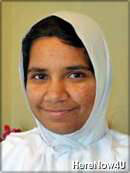
 | |  |  |
| Samani Prasanna Pragya | Samani Manan Pragya | Samani | Samani |
Seven Practices to Discover a Fascinating New World within You
Hidden by layers of delusion, worldly preoccupations and ignorance is the secret true form of your existence….. Shed the layers, one by one and realize the power and the wonders inside you! Lift the veil covering your soul and see your true self. Take a journey to the centre of your being to solve the mystery of what you are, your relationship with the universe and the purpose of your presence in this world.
Open a Brave New World outside You
You are more creative, more fearless, more compassionate and more loving: a better human being than you ever imagined. You are a unique component of this natural ordinance; born with a divine purpose and possessing the exceptional means to conquer all the hindrances that come in the way of realizing your true self. Through determination, diligence and the sincere pursuit of spiritual practice, you can overcome fear, anger, doubt, confusion, greed, envy and such negative and harmful emotions. See the outside world differently and, in doing so experience the marvel that is inside you.
Comprehend the Soul and Transform Your Life
What is Preksha Dhyana?
The word ‘Preksha' means ‘to perceive' and Dhyana is deep concentration on a specific subject. In the context of meditation it is that practice which engages the mind and attention in the perception of the subtle phenomena of consciousness. It is a practice to perceive beyond the clouds of superficial likes, dislikes, and attachments to worldly objects. All emotional states are closely observed but not experienced. As we watch our emotions closely and in a detached or neutral manner, we begin to notice the difference between the emotional-being and the true-being. The emphasis is to perceive and know, not to think and know, because perception is so completely concerned with the present. When we observe the present without the baggage of the past or concern of the future, we have the perception of reality.
The Seven Practices of Preksha Dhyana
Each of the seven practices of Preksha Dhyana is complex and, in some respects, complete in itself. They do share a set of preliminary exercises, mantra chanting and resolve making. While emphasis of each set is somewhat different, the final conclusion and result is very similar. The practitioner over time will overcome stress, fear and ill will. Preksha Dhyana helps one to gain control over negative emotions, and with that, the person will correct psychological flaws, effect positive personality changes, and start living a fruitful and happy lifestyle.
1) Kayotsarga (Deep relaxation with self-awareness)
Kayotsarga implies abandonment of the body through complete relaxation. The practice calms the nervous system, treats psychosomatic illnesses, recharges the body and the mind, and cultivates positive attitude and behavior.
2) Antaryatra (The Journey within)
Antaryatra requires the mind to be focused along the spinal cord. Concentration begins at the bottom tip of the spinal cord (Shakti Kendra-the center of energy) and gradually moves upwards until it reaches the brain (Gyana Kendra-the center of wisdom). Then reverse the direction of focus until it reaches the spinal cord tip. The benefits of the practice are: reducing stress, improving the nervous system, rejuvenating the vital energy and overcoming negative emotions.
3) Shwasa Preksha (Perception of breath)
Shwasa Preksha is the powerful technique of observing breath with complete awareness as a means to traverse from the gross to subtle levels of consciousness. Breath is the first step to the subtle because with the exception of the mind. It is the only bodily function that operates both at a conscious and unconscious level. Since the mind cannot be engaged in both perception and conception simultaneously, it cannot be the object of concentrated perception. With regular practice one would notice conception vanishing, leaving behind pure perception.
4) Sharira Preksha (Perception of body)
Sharira Preksha is the process of concentrating and observing the subtle phenomena occurring in each and every part of the body one at a time. It begins with the observation of all the sensations of the body's outermost layers and then gradually moves inside to the inner layers and organs. Our body's hidden mysteries can be understood. In effect this practice assists one to maintain good health.
5) Chaitanya Kendra Preksha (Perception of psychic centers)
Chaitanya Kendra Preksha is an exercise in which one concentrates on the various psychic centers in the body. The psychic centers are the key locations on the body that receive both the positive and negative energy from the universe and redistribute it through the human system. Focused flow of energy through any specific center intensifies the particular desired behavior.
6) Leshya Dhyana (Perception of Psychic Colors)
Leshya Dhyana takes the Chaitanya Kendra Preksha exercise further by specifying a color to visualize on the chosen psychic center. Five bright colors known for their positive qualities are used in this technique. As steadiness of meditation increases, visualization of colors intensifies. Today scientific evidence confirms that long exposure to specific colors has an influence on a person's emotions and personality. Leshya Dhyana results in purification of the aura.
7) Anupreksha (Contemplative Meditation)
Anupreksha is revising and thinking about what was concentrated upon and felt during meditation and analyzing it after the exercise. It is a practice of deep contemplation and understanding. The exercise is practiced for two purposes: to contemplate on that which is eternal, true and real and to bring about attitudinal changes through autosuggestion. This technique can be used for reinforcement of positive qualities or reversing negative traits.
Master of Preksha Dhyana
The ancient practice of meditation Preksha was reintroduced to the world in 1970 by Acharya Mahaprajna (a Jain ascetic), with the divine inspiration of his enlightened Guru Late Gurudev Tulsi. Acharya Mahaprajna researched, practiced, and experimented with himself for 20 years to rediscover and validate the process of Preksha which was practiced by Bhagavan Mahavira 2600 years ago. In his introduction Acharya Mahaprajna says: Soul is my God. Renunciation is my Prayer. Amity is my Devotion. Self restraint is my Strength. Non-violence is my Religion.
Although rooted in Jainism, Preksha Dhyana is egalitarian in form and content, free from religious symbolism, esoteric rites or any religious overtone. It is based on rational, modern science, experiments and experience. Grounded in the realities of the world Preksha Dhyana addresses modern days' problems and social needs. It can be practiced by everyone, regardless of race, religion, sex or belief.
The Path of Peace
Yoga
Yoga is a science which helps to achieve good health, leads a person to harmony, peace, concentration and balance. It produces flexibility and stability in the body to practice meditation.
Pranayama
Pranayama is an advance technique of breathing that regulates and balances the vital force pervading in the body. The regular practice in the guidance of the master helps to achieve a calm, blissful and focused mind. It provides enough oxygen to the blood, balances left and right hemispheres of the brain and keeps the body system healthy.
Mantra Meditation
Mantra Meditation is a powerful ancient practice using sound that affects the chemistry of the body and mind. Its powerful vibrations create strong safety armor around the practitioner that protects him/her from the outer evil effects and brings desired success in life. Mantra meditation awakens spiritual consciousness.
Preksha Meditation
Preksha Meditation is the path of self- awakening and self-realization. Its practice helps to connect one's soul at its most profound level and finally achieve a state of super consciousness. All seven process of Preksha meditation puts one in touch with enlightenment, peace of mind and permanent bliss that the whole world aspires for.
